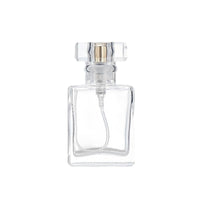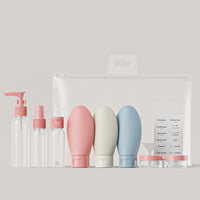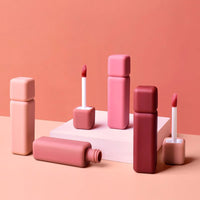Search
-
-
Types of Cosmetic...
Oct 16, 2024 -
Tailored Cosmetic...
Sep 26, 2024
Archive
- October 2024
- September 2024
-
- Tailored Cosmetic Packaging: Enhance Your Product Aesthetics
- Securing Your Pump Bottle: A Guide to Enhancing Safety with Our Innovative Packaging Techniques.
- Everything You Should Be Aware Of Regarding Top-Notch Travel bottles
- Airless Pumps: Understanding Their Functionality and the Perks They Provide
- Sustainable Lotion Bottles: What Sets Them Apart?
- Key Steps for Opening Airless Pump Bottles
- August 2024
Menu

Sustainable Lotion Bottles: What Sets Them Apart?
As the global population grows and economies expand, many natural resources are being damaged or depleted. The increase in global economic activity further exacerbates the strain on these resources. As a result, there is a growing demand for more environmentally-friendly manufacturing processes and sustainable products.
It's not just the products themselves that need to be sustainable, but also their packaging. Eco-friendly body lotion bottles, for example, provide a great alternative to the traditional packaging used by many major brands. Using sustainable packaging, such as glass jars or bottles, for lotions, shampoos, and other beauty products, can significantly reduce environmental impact.
Understanding Eco-Friendly and Sustainable Packaging
When we think about a greener future, phrases like “reduce, reuse, recycle” often come to mind. These principles are frequently cited by companies that are looking to adopt more sustainable practices and offer environmentally-friendly packaging solutions.
In the beauty industry, lotions are typically packaged in plastic bottles because they are a cost-effective option for both manufacturers and consumers. However, plastic packaging is not aligned with eco-friendly goals and does little to protect natural resources from further harm.
Many brands assume that using recyclable packaging is enough to position them as leaders in sustainability. But the concept of being truly eco-friendly goes beyond just recycling. Without a genuine commitment to reducing environmental impact, a brand’s efforts may fall short of meaningful sustainability.
For packaging to be considered truly sustainable and eco-friendly, it must meet specific criteria that help to minimize its environmental footprint. These include:
- The materials used for lotion bottle packaging must be both safe and beneficial for individuals and the environment. The packaging should not pose any health risks to users and must be free from harmful effects.
- Packaging solutions should also meet specific market standards for cost-effectiveness and performance. To achieve true sustainability, renewable energy should be utilized throughout the entire process— from sourcing materials and manufacturing to transportation and recycling.
- Production should prioritize the use of renewable and recycled materials for making lotion bottles. Additionally, clean production technologies should be implemented in the manufacturing process to minimize environmental impact.
- It's important that the materials used in packaging remain "healthy" throughout their entire life cycle, meaning they should not release harmful toxins at any stage.
- The design of the lotion bottle should be optimized for functionality and sustainability. Beauty brands can only genuinely claim their packaging is eco-friendly if all these criteria are met. The same standards apply to other products, such as hand soaps, body washes, and similar items.

The Advantages of Adopting Eco-Friendly Packaging for Beauty Brands
When beauty brands choose to adopt eco-friendly packaging for their lotions, they unlock several key benefits.
Firstly, transitioning to sustainable packaging greatly minimizes the environmental footprint of the brand. By using eco-friendly manufacturing practices and packaging materials, brands contribute to the conservation of the planet’s limited natural resources. Moreover, embracing the zero-waste movement helps prevent the accumulation of waste, particularly the disposal of toxic materials that harm the environment.
Implementing sustainable practices can drastically lower a brand's carbon footprint, aligning with global efforts to combat climate change.
There are other perks as well. By prioritizing eco-friendly practices, brands demonstrate to their customers a genuine commitment to protecting the environment. In today's market, consumers increasingly favor brands that offer sustainable products. This trend is evident across the beauty industry, including small items like lip balms.
Brands that lead in adopting green practices can gain a competitive edge over those that lag behind in environmental responsibility.
Switching to eco-friendly packaging also reduces exposure to harmful chemicals and allergens often found in conventional cosmetic containers. Many traditional packaging materials contain toxins and allergens that pose health risks to consumers. With growing access to information, consumers are becoming more informed and aware of these dangers and are actively seeking safer alternatives.
Furthermore, the assumption that eco-friendly packaging is always more expensive is a misconception. Many recyclable materials, like certain types of plastics, can be cost-effective. Beauty brands may find that producing eco-friendly lotion bottles is more affordable than anticipated, even when incorporating special features like pump sprayers.
This shift to sustainable packaging is not only advantageous for brands selling directly to consumers but also benefits those operating in the wholesale cosmetics market. Adopting eco-friendly packaging solutions can enhance a brand's appeal in both business-to-consumer (B2C) and business-to-business (B2B) contexts.
Brands can also customize their eco-friendly packaging to reflect their unique image and values, using specific sustainable materials that align with their identity.
Conclusion
Switching to eco-friendly materials for cosmetic containers, including skincare products like lotions, is a critical step toward enhancing sustainability in the beauty industry. By choosing packaging options that incorporate recycled glass or other sustainable materials, companies can significantly lessen the environmental impact of both their production processes and product packaging. However, it is essential for brands to fully understand what makes packaging truly sustainable to contribute effectively to the broader movement towards eco-conscious beauty products.
Contact us
Add: No. 8 Building, Xinchengda Industrial Park, Wuhuan Road, Dongxihu, Wuhan 430040, China
(+86)18963979371
(+86)027-83372627
info@snpacks.com









